Enzymes are biological catalysis. They are specialized proteins (except ribozymes) capable of catalyzing specific reactions in the cells. In the previous post, we have discussed the Structure and Functions of Enzymes. In the present post, we will discuss the Properties of Enzymes.
What are the Properties of Enzymes?
@. The properties of an enzyme can be summarized as:
(1). Catalytic Property
(2). Specificity
(3). Reversibility
(4). Sensitiveness to Heat and Temperature
(5). Specific to Hydrogen Ion Concentration (pH)
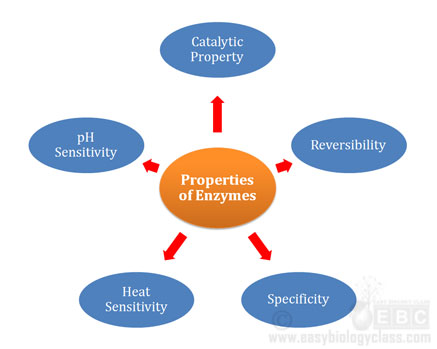 (1). Catalytic property:
(1). Catalytic property:
Ø Enzymes have extra-ordinary catalytic power.
Ø They are active in very small quantities.
Ø A small amount of enzyme is enough to convert a large quantity of substrates.
Ø The enzymes remain unchanged after the reaction.
| You may also like NOTES in... | ||
|---|---|---|
| BOTANY | BIOCHEMISTRY | MOL. BIOLOGY |
| ZOOLOGY | MICROBIOLOGY | BIOSTATISTICS |
| ECOLOGY | IMMUNOLOGY | BIOTECHNOLOGY |
| GENETICS | EMBRYOLOGY | PHYSIOLOGY |
| EVOLUTION | BIOPHYSICS | BIOINFORMATICS |
Ø The turn over number of enzymes ranges from 0.5 to 600000.
Ø Turn over number: The number of substrate molecules converted by one molecule of enzyme per second when its active site is saturated with the substrate.
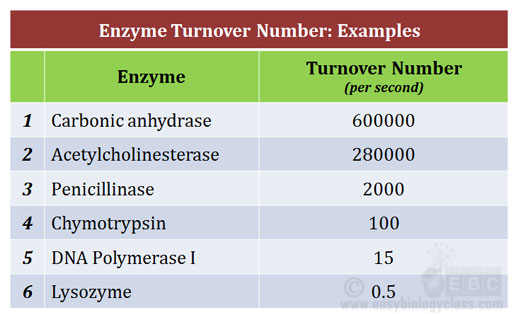
(2). Specificity:
Ø Enzymes are very specific in their action.
Ø Particular enzyme acts on a particular substrate only.
Ø Enzymes are also specific to a particular type of reaction.
Ø In some rare cases, the specificity may not be too strong.
Ø Enzymes show different types of specificity such as Bond Specificity, Group Specificity, Substrate Specificity, Stereoscopic specificity, Geometric Specificity and Cofactor Specificity.
Ø Bond specificity: It is also called as relative specificity. Here the enzyme is specific for a bond. Example: Peptidase is specific for Peptide Bond, Lipase is specific for ester bond in a lipid.
Ø Group specificity: It is also called as structural specificity. Here the enzyme is specific for a group. Example: Pepsin (an endopeptidase) hydrolyze the peptide bonds in with the amino group belongs to aromatic amino acids (phenylalanine, tyrosine and tryptophan) (n+1 ≠ proline)
Ø Substrate specificity: It is also called absolute specificity. Here the enzyme acts only on a particular substrate. Example: Arginase acts only on arginine; Carbonic anhydrase acts only on carbonic acid.
Ø Optical specificity: It is also called stereospecificity. This is the highest specificity shown by an enzyme. Here the enzyme is specific not only to the substrate but also to its optical configuration. Example: L amino acid oxidase acts only on L-amino acids, not on D-amino acids. Similarly, the alpha-amylase act only on α-1-4 glycosidic linkage of starch and glycogen. It is not able to hydrolyse the β-1-4 glycosidic linkage of cellulose.
Ø Co-factor specificity: This shows that enzymes are not only specific to the substrate but also specific to its co-factors.
Ø Geometric specificity: Here the specificity is very less. Some enzymes will work with a small range of similar substrates having similar structural geometry. Example: Alcohol dehydrogenase can oxidize methanol and n-propanol to aldehydes
Learn more: Enzyme Substrate Specificity
(3). Reversibility:
Ø Most of the enzymes catalyzed reactions are reversible.
Ø The reversibility of the reaction depends upon the requirements of the cell.
Ø In some cases, there are separate enzymes for forward and reverse reaction.
Ø Some enzyme-catalyzed reactions are not reversible.
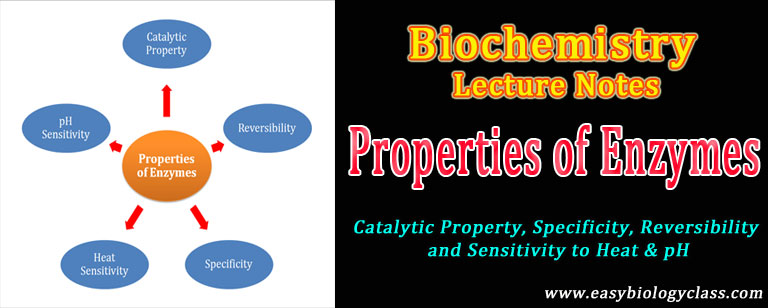
| You may also like... | ||
|---|---|---|
| NOTES | QUESTION BANK | COMPETITIVE EXAMS. |
| PPTs | UNIVERSITY EXAMS | DIFFERENCE BETWEEN.. |
| MCQs | PLUS ONE BIOLOGY | NEWS & JOBS |
| MOCK TESTS | PLUS TWO BIOLOGY | PRACTICAL |
(4). Sensitiveness to heat and temperature:
Ø Enzymes are very sensitive to heat and temperature. (They are thermo-labile.)
Ø The maximum activity of an enzyme will be at normal temperature.
Ø Correct temperature for the maximum activity is called optimum temperature.
Ø Enzymes will be inactive at very low temperature. (This the reason for preserving food and vegetables in the refrigerator)
Ø The enzymatic activity increases with increase in temperature up to a certain level (study the graph below)
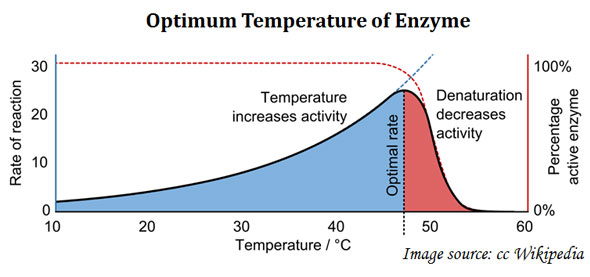
Ø At higher temperature (60-70°C), the enzyme is destroyed or denaturated.
Ø Do you know an enzyme active at very high temperature? It is Taq-Polymerase used in PCR reactions. The optimum temperature for Taq-polymerase is 75 to 80°C.
(5). Sensitiveness pH:
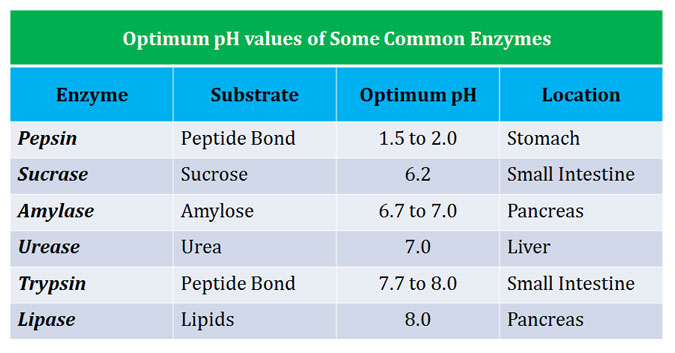
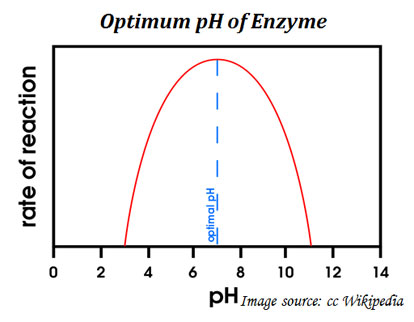
Ø Enzymes are specific for their pH requirement.
Ø Some enzymes are active in acidic pH (pH below 7), some are active in basic pH (pH above 7) and some others are in neutral pH.
Ø The correct pH of an enzyme is denoted as Optimum pH.
Do you have any Queries?
Please leave me in the Comments Section below.
I will be Happy to Read your Comments and Reply.
You might also like…
@. Enzyme: Structure and Functions

You are a life saver, your lecture/ notes are concise, meaningful, clear and understadable***** five stars 🌟
Thank you very much publisher
Inorder for me to say something,I would like to thank the publisher.This was a very important my stduies.
hello publisher!
kindly discuss clinical importance of enzyme
Thanks in advance!!
Thanks
Thanks this was so useful for my sons prep he’s in year 8 and his prep is really stacking up so thanks😀
Easily understandable notes a great thanks to the publisher
can we please know an author and publisher ? for referencing
Was well shortened smart understandable notes, thanks to the producer
Thank you
Firstly I would like to thank you.This was very usefull for my university studies .